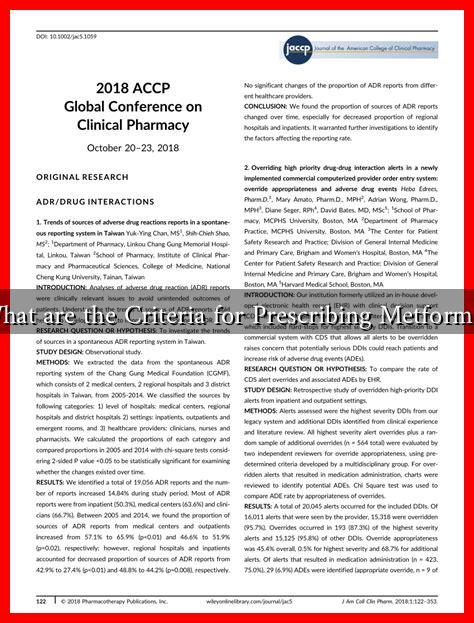-
Table of Contents
What are the Criteria for Prescribing Metformin?
Metformin is a widely used medication primarily prescribed for the management of type 2 diabetes. It is often the first-line treatment due to its effectiveness, safety profile, and additional benefits beyond glycemic control. However, the decision to prescribe metformin is not taken lightly and involves several criteria that healthcare providers must consider. This article delves into the key criteria for prescribing metformin, supported by research and clinical guidelines.
Understanding Metformin
Metformin belongs to the biguanide class of medications and works by decreasing glucose production in the liver, increasing insulin sensitivity, and enhancing peripheral glucose uptake. It is particularly beneficial for patients who are overweight or obese, as it can aid in weight management while controlling blood sugar levels.
Criteria for Prescribing Metformin
When considering metformin for a patient, healthcare providers evaluate several criteria, including:
- Diagnosis of Type 2 Diabetes: Metformin is primarily prescribed for patients diagnosed with type 2 diabetes, characterized by insulin resistance and relative insulin deficiency.
- Blood Glucose Levels: The American Diabetes Association (ADA) recommends initiating metformin therapy for patients with an HbA1c level of 6.5% or higher.
- Body Mass Index (BMI): Metformin is particularly effective for overweight or obese patients (BMI ≥ 25 kg/m²) as it can help with weight loss.
- Age Considerations: While metformin can be prescribed to adults of all ages, caution is exercised in elderly patients due to potential renal impairment.
- Renal Function: A thorough assessment of renal function is crucial. Metformin is contraindicated in patients with an estimated glomerular filtration rate (eGFR) below 30 mL/min due to the risk of lactic acidosis.
- Cardiovascular Health: Patients with cardiovascular disease may benefit from metformin due to its cardiovascular protective effects, as supported by studies like the UKPDS (United Kingdom Prospective Diabetes Study).
Additional Considerations
Beyond the primary criteria, several additional factors may influence the decision to prescribe metformin:
- Patient Preferences: Engaging patients in shared decision-making is essential. Some patients may prefer oral medications over insulin therapy.
- Cost and Accessibility: Metformin is generally affordable and widely available, making it a practical choice for many patients.
- Potential Side Effects: While metformin is well-tolerated, some patients may experience gastrointestinal side effects. Providers should discuss these with patients and consider alternatives if necessary.
Case Studies and Statistics
Research supports the efficacy of metformin in managing type 2 diabetes. A study published in the Journal of Clinical Endocrinology & Metabolism found that metformin significantly reduced HbA1c levels by an average of 1.5% in patients with type 2 diabetes. Additionally, the Diabetes Prevention Program (DPP) demonstrated that metformin reduced the risk of developing diabetes by 31% in high-risk individuals.
Furthermore, a meta-analysis indicated that metformin therapy is associated with a 15% reduction in all-cause mortality among patients with type 2 diabetes, highlighting its potential benefits beyond glycemic control.
Conclusion
In summary, the criteria for prescribing metformin encompass a comprehensive evaluation of the patient’s diagnosis, blood glucose levels, BMI, renal function, and overall health status. Metformin remains a cornerstone in the management of type 2 diabetes due to its effectiveness, safety, and additional health benefits. As healthcare providers navigate the complexities of diabetes management, understanding these criteria ensures that patients receive optimal care tailored to their individual needs.
For more information on diabetes management and treatment options, consider visiting the American Diabetes Association.

